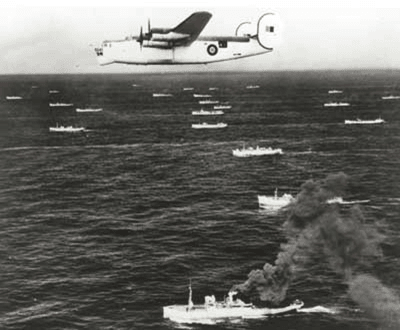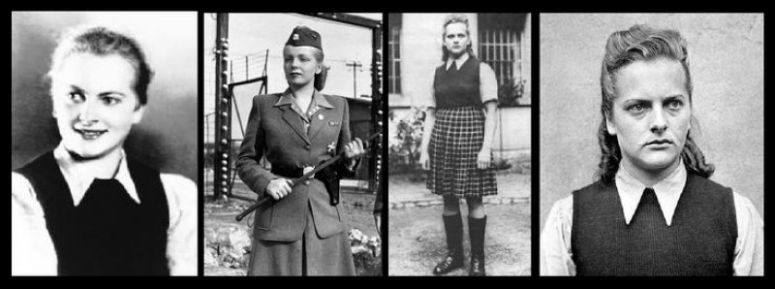Battle of the Atlantic.

The Battle of the Atlantic was the longest continuous military campaign in World War II, running from 1939 to the defeat of Germany in 1945. At its core was the Allied naval blockade of Germany, announced the day after the declaration of war,  and Germany’s subsequent counter-blockade. It was at its height from mid-1940 through to the end of 1943. The Battle of the Atlanticc pitted U-boats and other warships of the Kriegmarine and aircraft of the Luftwaffe against the Royal Canadian Navy, Royal Navy, and Allied merchant shipping.
and Germany’s subsequent counter-blockade. It was at its height from mid-1940 through to the end of 1943. The Battle of the Atlanticc pitted U-boats and other warships of the Kriegmarine and aircraft of the Luftwaffe against the Royal Canadian Navy, Royal Navy, and Allied merchant shipping. The convoys, coming mainly from North America and predominantly going to the United Kingdom and the Soviet Union, were protected for the most part by the British and Canadian navies and air forces. These forces were aided by ships and aircraft of the United States from September 13, 1941. The Germans were joined by submarines of the Italian Royal Navy after their Axis ally Italy entered the war on June 10, 1940.
The convoys, coming mainly from North America and predominantly going to the United Kingdom and the Soviet Union, were protected for the most part by the British and Canadian navies and air forces. These forces were aided by ships and aircraft of the United States from September 13, 1941. The Germans were joined by submarines of the Italian Royal Navy after their Axis ally Italy entered the war on June 10, 1940. 
As an island nation, the United Kingdom was highly dependent on imported goods. Britain required more than a million tons of imported material per week in order to be able to survive and fight. In essence, the Battle of the Atlantic was a tonnage war: the Allied struggle to supply Britain and the Axis attempt to stem the flow of merchant shipping that enabled Britain to keep fighting. From 1942 onwards, the Germans also sought to prevent the build-up of Allied supplies and equipment in the British Isles in preparation for the invasion of occupied Europe. The defeat of the U-boat threat was a pre-requisite for pushing back the Germans, Winston Churchill later wrote,

he outcome of the battle was a strategic victory for the Allies—the German blockade failed—but at great cost: 3,500 merchant ships and 175 warships were sunk for the loss of 783 U-boats.
The name “Battle of the Atlantic” was coined by Winston Churchill in February 1941. It has been called the “longest, largest, and most complex” naval battle in history. The campaign started immediately after the European war began, and lasted six years. It involved thousands of ships in more than 100 convoy battles and perhaps 1.000 single-ship encounters, in a theatre covering thousands of square miles of ocean. The situation changed constantly, with one side or the other gaining advantage, as new weapons, tactics, counter-measures, and equipment were developed by both sides. The Allies gradually gained the upper hand, overcoming German surface raiders by the end of 1942 and defeating the U-boats by mid-1943, though losses to U-boats continued to war’s end.
Losses U-boats in 1939, 9, in 1940, 24, 35 boats were lost during 1941, 85 in 1942, overall losses in 1943 were 243 U-boats, 1944 was even worse than 1943, steady losses all year brought the total up to 249 boats when the year came to and end and Germany lost over 120 U-boats in action in the first 5 months of the year. Kriegsmarine personal casualties from 1939-1945 are 191.287.
The Royal Navy lost 10 frigates, 22 corvettes, 10 sloops, 15 auxillary cruisers and 1035 smaller units, including those lent to Commonnwealth and other allied naval forces. The Royal Navy lost 74 submarines, 8 minelayers, and 32 minesweepers. A preliminary British military report indicated 50,758 Royal Navy deaths as well as 30,248 Merchant Navy deaths, and include figures from the losses of Newfoundland and Southern Rhodesia.












Leave a Reply